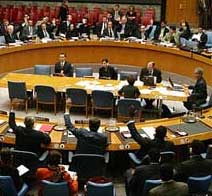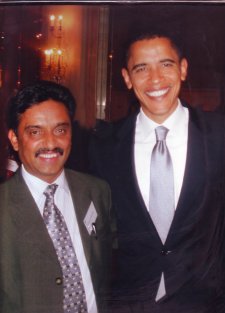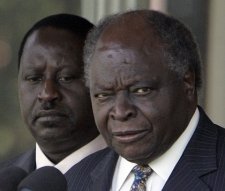By David Heller (Posted: January 22, 2009)
In just the first full day of his historic Presidency, Barack Obama took significant steps towards restoring transparency and accountability in a government widely criticized for its unbridled secrecy, by signing an executive order (EO) affecting the release of presidential records, and releasing three memorandums, including, one reforming the Freedom of Information Act (FOIA) and another articulating his administration’s commitment towards openness and transparency in government.
These acts – a reversal of Bush administration policy – help address several governance flaws previously identified as deserving immediate attention. By initiating their term with these impressive documents, the Obama administration has shown it shares TAI’s commitment to promoting the values inherent in open government.
Obama’s EO revokes Executive Order 13233, a Bush administration product that allowed former presidents or their heirs to flaunt executive privilege in an effort to keep their records secret and protect their reputation. Since 1976, following the Nixon Administration’s alleged abuse of executive authority, all communications by the President and his officers have been archived, and are eligible for release after 12 years through FOIA requests. But Bush’s EO compounded the difficulties facing interested observers requesting access to information following this 12 year blackout.
Obama’s EO expands what has been a restricted right to access information concerning governmental action. It entails three major changes.
Scope of exemptions
First, Obama has reduced the justifications a President (sitting or former) can employ to deny a FOI request, through “executive privilege”. Under Bush’s EO 13233, presidents were exempt from sharing information if doing so would potentially compromise:
military, diplomatic, or national security secrets, Presidential communications, legal advice, legal work, or the deliberative processes of the President and the President’s advisers.
Under Obama’s new EO, this list has shrunken to:
national security (including the conduct of foreign relations), law enforcement, or the deliberative processes of the executive branch.
With fewer executive privilege exemptions, presidents will be less able to rebuff FOIA requests.
Procedures
The new EO also revises the procedure of reviewing FOIA requests, changing it from a system of presumed secrecy to a system which requires review by the President and staff. Under Bush’s EO, upon receipt of a request that might trigger executive privilege, the National Archivist simply had to notify the incumbent president and the previous president. The former president then had 90 days – with the possibility of extension – to request executive privilege. When faced with a former president seeking to exercise this privilege, the burden of proof was on the sitting president to prove “compelling circumstances” to release the information.
Obama’s EO restricts the powers of the former president to dictate the fate of an FOI request. For one, it significantly reduces (to 30 days) the time a former president has to review the request. Secondly, it includes the Attorney General – a cabinet-level officer held accountable by Congress – in the process of review. This not only ensures that more opinions concerning the requested information’s sensitivity are heard, it protects a sitting president from being unduly influenced by a former president’s wishes.
Powers of the sitting president to override former presidents
In consonance with the previous revision, Obama’s EO explicitly empowerssitting presidents to override a past president’s desire to keep information secret. Previously, under Bush’s EO, an incumbent president had to be faced with “compelling circumstances” to overturn the request of a former president to deny the disclosure of information.
Now, sitting presidents are not discouraged or deterred from contradicting the parochial wishes of previous presidents. Instead, the National Archivist “shall abide by any instructions given him by the incumbent President or his designee unless otherwise directed by a final court order,” without regard for how ‘compelling’ the incumbent president’s reasons may be.
The values implicit in the EO were complemented by two memorandums also released on Obama’s first day.
Memorandums
The memorandums, while not yet publicly available on the White House website, confirm the new administration’s commitment – articulated throughout the campaign – towards promoting an accessible and transparent government.
Filled with sweeping normative statements, they also include a framework for ensuring these values will be reflected in upcoming policy reform.
FOIA Memorandum
In a memorandum on the FOIA, Obama clarified that it would be the position of his administration to err on the side of releasing information, rather than restricting it. His claims are in stark contrast to a memo filed by then-Attorney General John Ashcroft, which reassured government agencies and departments they would be supported in efforts to profligately reject FOIA requests. As the new President says,
All agencies should adopt a presumption in favor of disclosure, in order to renew their commitment to the principles embodied in FOIA, and to usher in a new era of open Government. The presumption of disclosure should be applied to all decisions involving FOIA.
Obama directed Attorney General Eric Holder and Director of the Office of Management and Budget, Peter Orszag, to issue new internal guidelines informed by this commitment to openness.
Transparency and Accountability Memorandum
The second memo was no less ambitious. Obama begins,
My Administration is committed to creating an unprecedented level of openness in Government. We will work together to ensure the public trust and establish a system of transparency, public participation, and collaboration. Openness will strengthen our democracy and promote efficiency and effectiveness in Government.
In accordance with basic principles of good governance, the memo goes on to say, “Government should be transparent,” “Government should be participatory,” and “Government should be collaborative.”
Stating the importance of running a government that embraces such values is one thing. Prompting that government to act on behalf of these ideals is another – and far more difficult – task entirely.
But Obama seems up for the challenge. To translate these goals into a practical set of guidelines, he ordered the creation of an Open Government Directive within 120 days to instruct governmental agencies and departments to “take specific actions implementing the principles set forth in this memorandum.”
Stay tuned for updates about the content of the Open Government Directiveand opportunities to shape it.
For insight into how the new actions detailed in this post align with general World Resources Institute (WRI) principles and activities, particularly their work to protect the environment, please read this article, posted on WRI’s main website.




